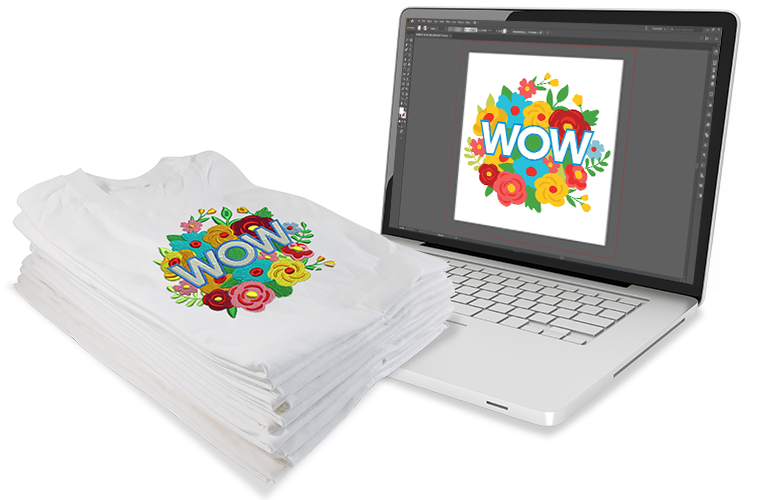Cost Effective Digitizing for Embroidery: Accuracy and Detail
Cost Effective Digitizing for Embroidery: Accuracy and Detail
Blog Article
Simplifying the Art of Embroidery Digitizing: Step-by-Step Guide
As technology continues to breakthrough, the digitization process has come to be a lot more available, enabling lovers to bring their elaborate styles to life with simplicity. In this guide, we will certainly decipher the intricacies of embroidery digitizing, damaging down each step methodically to simplify the procedure and encourage both novices and seasoned embroiderers alike.
Understanding Embroidery Digitizing Software
Needlework digitizing software program acts as a critical device for transforming complex designs into electronic styles suitable with needlework devices, promoting accurate sewing and customization. This specific software program permits customers to import numerous picture documents formats, such as JPG or PNG, and convert them into needlework machine-readable formats like DST, EXP, or PES - Digitizing for Embroidery. By using features like stitch editing, padding alternatives, and thread shade option, digitizing software application makes it possible for individuals to manage every facet of the style process
Moreover, advanced embroidery digitizing software program provides devices for developing intricate styles, changing stitch thickness, and including intricate information. Customers can likewise sneak peek the style before sewing it out, making sure accuracy and lessening errors. Additionally, many software application programs provide automatic features that help enhance the digitizing procedure, conserving time and initiative.
Recognizing the capacities of embroidery digitizing software is vital for accomplishing high-grade outcomes in needlework tasks. By mastering this tool, embroidery fanatics and professionals can unleash their imagination and bring complex designs to life with accuracy and efficiency.

Selecting the Right Layout Data
After familiarizing on your own with the abilities of needlework digitizing software application, the following critical action in the procedure is choosing the appropriate style declare your job. Digitizing for Embroidery. When selecting a style apply for embroidery digitizing, it's important to think about the intricacy of the layout, the size of the last item, and the sort of fabric you will be collaborating with
For intricate styles with fine details, a high-resolution photo or vector file is suggested to guarantee that the needlework machine can properly duplicate the design. Furthermore, the dimension of the end product plays a considerable duty in picking the right style file. Bigger layouts might need higher resolution files to keep clarity and intensity.
Moreover, the kind of material you will certainly be embroidering on influences the option of design file. Different textiles may need changes in the design documents to guarantee that the stitches are correctly aligned and the layout appears as meant. By carefully choosing the ideal layout documents based on these aspects, you can establish on your own up for a successful needlework digitizing procedure.
Digitizing Tools and Strategies
Utilizing specialized software Full Article program and precision techniques, digitizing tools are necessary in transforming complex layouts into embroidery-ready documents. Needlework digitizing software program, such as Wilcom, Hatch, or Embrilliance, provides the required platform to convert art work right into stitch data. These programs supply attributes like stitch editing, rug options, and lettering tools to guarantee the design translates effortlessly onto textile.
Among the vital strategies in digitizing is developing a clear course for the embroidery maker to follow. This includes digitizing each element of the style with accuracy, establishing stitch kinds, densities, and instructions. By utilizing tools like digitizing tablets or software-specific plugins, embroiderers can accomplish a high degree of precision in their digitized layouts.
In addition, grasping the art of padding stitching is critical for producing quality needlework. Underlay stitching supports the textile and develops a structure for the style, ensuring that the end product is both visually enticing and long-lasting. By recognizing these digitizing devices and strategies, embroiderers can boost their craft and bring intricate styles to life with precision and efficiency.
Customizing Stitch Types and Instructions
The choice of stitch types can considerably affect the overall look and appearance of the stitched design. By strategically combining these stitch types, embroiderers can achieve depth and dimension in their designs.
In addition, the instructions of stitches plays a crucial role in improving the aesthetic web allure of the last needlework. Diverse stitch directions can add appearance, highlight details aspects, and produce aesthetic passion. As an example, transforming the angle of stitches can mimic movement or all-natural patterns like hair or plumes. By explore various stitch angles and patterns, embroiderers can bring their styles to life with exceptional information and intricacy. Mastering the art of personalizing stitch kinds and instructions encourages embroiderers to unleash their creativity and raise the high quality of their job.
Testing and Refining Your Digitized Design
To guarantee the accuracy and quality of your digitized style, detailed testing and refinement are necessary actions in the needlework digitizing process. As soon as you have actually finished the digitization of your style, it is important to examine it prior to waging the real embroidery. Checking allows you to determine any type of potential concerns such as thread breaks, stitch density issues, or design distortions that may impact the final outcome.

After testing, it is necessary to improve your digitized style based on the feedback from the examination sew-out. This might include tweaking check my source sew setups, readjusting densities, or making modifications to the total design to attain the desired outcome. By iterating with screening and improvement, you can adjust your digitized layout to excellence before progressing with the actual needlework procedure.
Final Thought
In final thought, understanding the art of embroidery digitizing requires a comprehensive understanding of the software, choosing the best layout file, making use of digitizing devices and methods, tailoring stitch kinds and directions, and screening and fine-tuning the digitized design. By following these actions, embroiderers can simplify the digitizing process and develop top notch stitched designs with precision and efficiency.
Report this page